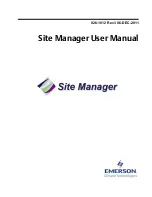
Windows Installer Editor Reference
39
Setting Up
z
Add custom actions for predefined folders in merge modules
This affects the merging of merge modules that place files in predefined directories,
such as \Windows, \System32, and so on. Mark this to have the merge emulate the
behavior of the Microsoft merge tool, mergemod.dll, which uses custom actions to
handle predefined directories. Clearing this check box can fix potential problems
with capitalization inconsistencies in the directory name.
Note
Windows Installer Editor has its own code for merging a module into an .MSI, but
this check box causes your merge to follow the Microsoft conventions for merging.
Microsoft’s merging code adds a custom action to the installation for each
predefined directory referenced in each included merge module. The custom action
uses a Set Property action to set the predefined directory name, whereas the
Windows Installer Editor code sets the predefined directory name by adding an item
to the Directory table of the Windows Installer database.
z
Display error if merge modules conflict with main installation rows
Merge module errors occur if a merge module contains a row that has the same key
as a row in the main installation. Clear this to ignore such errors and let the merge
module row overwrite the row in the main installation.
z
Enable Quick Compile
Mark this to speed the compile process by compressing only previously
uncompressed or changed files. Quick Compile writes the .MSI table information. If
a file or media has changed, a full compile will occur instead. Quick Compile is for
project files only. You can also speed compile time by using ExpressBuild, a multi-
processor compile feature.
See
About ExpressBuild
on page 44.
Software Virtualization Options
¾
(Not available in the Visual Studio integrated editor.)
z
Install into virtual layer from Run button
Mark this to install an installation into a virtual layer when you click the Run button.
This creates a new layer, installs the .MSI into the layer, and activates the layer.
After you test the installation, you can delete the layer to restore your computer to
its original state.
See
Running An Installation
on page 99.
Startup Options
z
Reload last project at startup
Mark this to open the last installation you worked on when you start Windows
Installer Editor.
Not available in the Visual Studio integrated editor.
z
Preferred Editor
This option appears only if Microsoft Visual Studio is installed. It determines which
editor is opened when you double-click a Windows Installer file. Always Prompt
always displays a dialog box that prompts you to choose the editor. Last Saved In
uses the editor in which the installation file was last saved.
















































